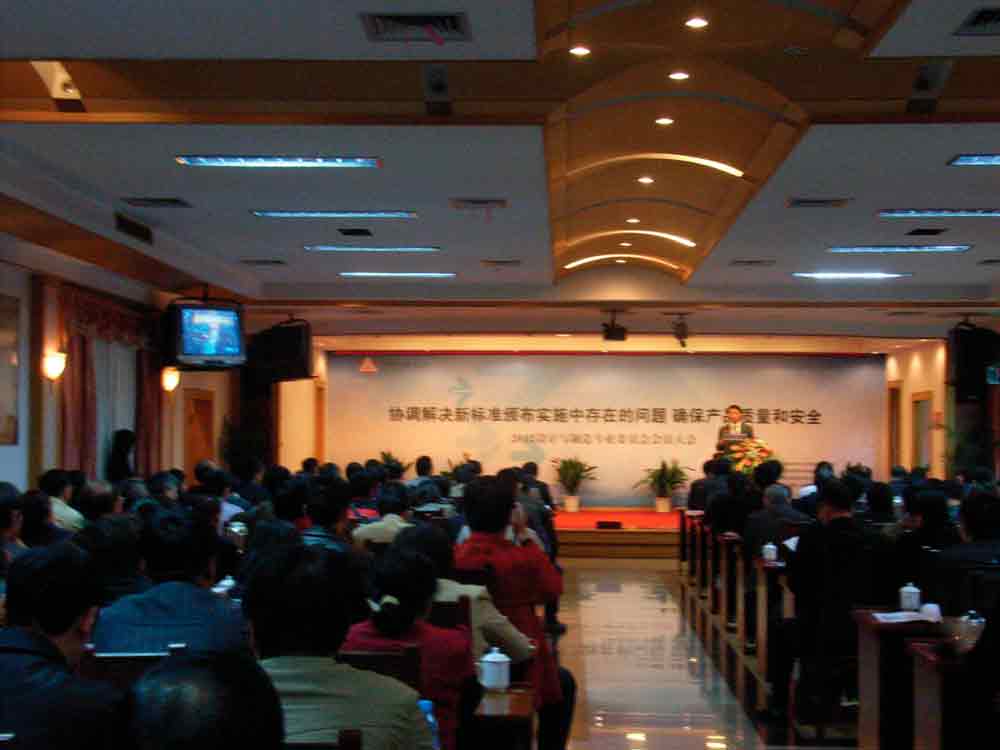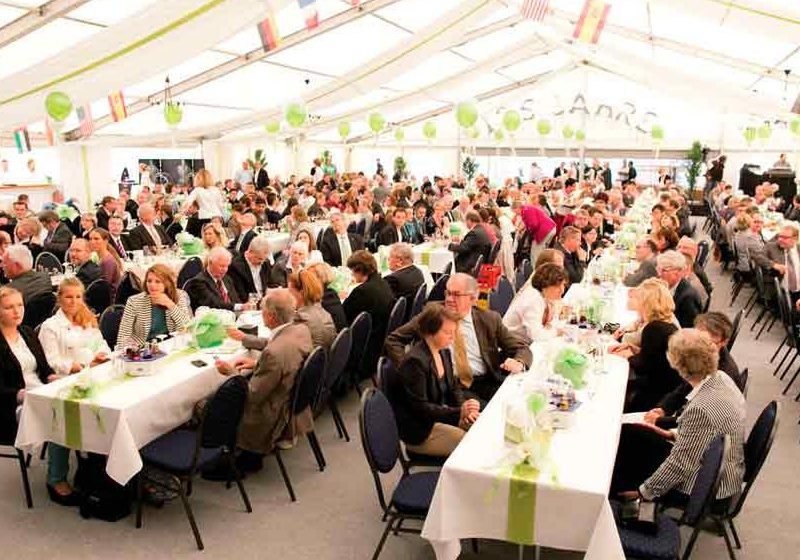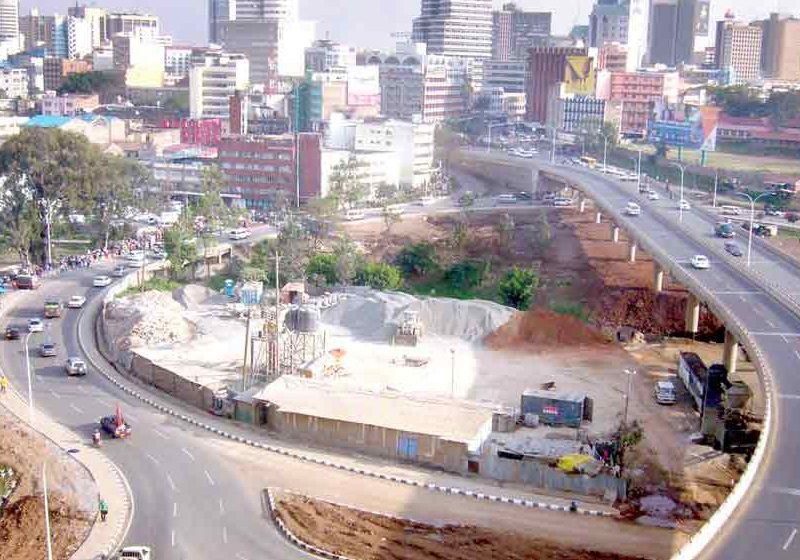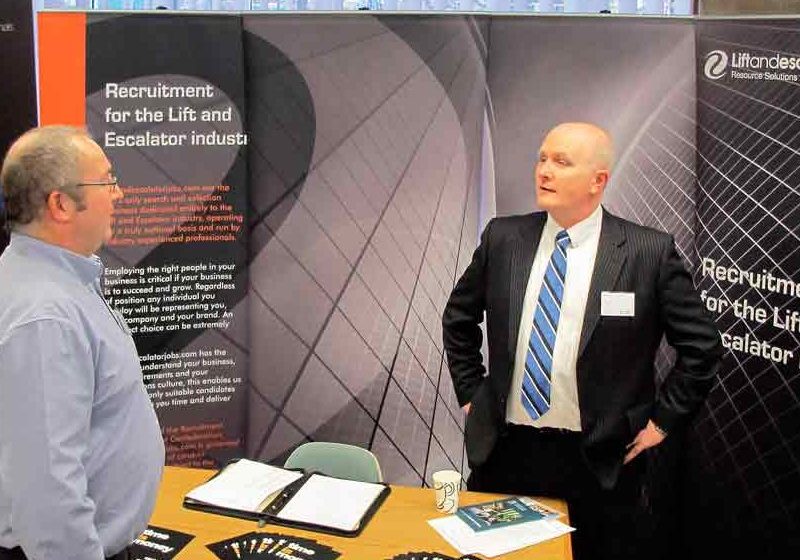Zhangjiagang, China, hosted more than 200 at the China Elevator Association (CEA) meeting on product-safety standards implementation.
China Elevator Association (CEA) Design and Manufacture Committee Annual Meeting was held in Zhangjiagang, China, on November 9-12, 2012. More than 200 attended the event, which focused on discussing solutions to problems in the implementation of new standards for product safety. China is improving its elevator-safety administration system by applying a full series of new domestic codes and regulations, including the Regulation for Lift Supervisory Inspection and Periodical Inspection for Firefighters Lifts, Hydraulic Lifts, Service Lifts, Escalators and Moving Walks, respectively. This is significant in improving the safety of vertical-transportation equipment and formulating discussions on how to adapt to changes in safety measures.
The meeting was co-hosted by Changjiang Runfa Machinery Group, Mayr Power Transmission (Zhangjiagang) Co., Ltd. and Shenyang Bluelight Mechatronics Co., Ltd. Changjiang Runfa is a Chinese guide-rail manufacturer founded in 1988. Mayr specializes in brakes, clutch and power transmission systems for the elevator industry and other machinery industries. Shenyang Bluelight is a manufacturer of elevator drives and control systems, including energy-saving gearless traction machines. Changjiang Runfa hosted a dinner party on the opening day with impressive performances, and Mayr was the host of the event’s second day.
Qian Fuquan, secretary general of CEA Design and Manufacture Committee, announced the opening of the conference on the rainy morning of November 9, 2012. Following Qian Fuquan’s opening remarks, Qiu Qiqin, vice president and general manager of Changjiang Runfa, welcomed all participants and expressed his appreciation for the opportunity to discuss current issues and trends of the elevator industry with prominent experts of the industry in China.
Wang Jiling, director of the Design and Manufacture Committee, also expressed his appreciation to attendees and the officers from the General Administration of Quality Supervision, Inspection and Quarantine of China (AQSIQ), CEA, Langfang Institute, National Elevator Inspection and Testing Center (NETEC) and the Quality and Technology Inspection Offices of Jiangsu Province and Zhangjiagang City. “The CEA Annual Meeting on Design and Manufacture has developed into an essential and well-recognized forum for industry professionals to exchange experience, learn from one another and renew friendships,” Jiling said. He added that the meeting would address issues related to the implementation of new national codes and inspection regulations regarding elevator safety. The discussion aimed to provide guidance for the elevator industry in regards to AQSIQ’s issuance of the new national standards and inspection regulations.
According to Jiling, China is the world’s leading elevator market, with an estimated increase of 12-15% in 2012. Product prices remain high, with greater profit margins due to the recent decrease in the costs of steel materials. In addition, new companies, most of them small and medium sized, continue to join the elevator industry. There is a trend of expansion by some of the leading joint-venture companies and national industry players increasing investment and adding manufacturing capacities. Testing towers are also being built taller, which can help accommodate the market growth. Among new products, the elevator industry will see an increase of spiral escalators and twin cab elevators.
It is estimated that China’s demand for elevators will continue to steadily rise in the next 20 years to meet the increase in housing construction, subway projects, shopping malls, office buildings and hospitals. The accelerating development of the midwest regions and the modernization of old equipment will also contribute to market demand.
Jiling added:
“On the other hand, the competition is getting sharper, and the industry as a whole is seeking a way to win in the competition while securing good quality and safety performance of elevators. The elevator industry should not reduce costs blindly at the cost of quality and safety. This conference aims to solve problems in the implementation of the new standards and inspection regulations for escalators, service lifts, firefighter lifts, etc. The problems arising during the transition period pose challenges for manufacturers. It is recommended that companies take part in the preview and revision period of making the new standards in order to find problems in the early stages, which would prove better than facing problems without preparations when the standards are finalized and issued. Some significant local codes and regulations, such as the safety management reform, which was approved and put in practice in Guangdong earlier this year, are likely to get upgraded into state codes or regulations. It is recommended that companies concentrate on building up R&D capacities, as the future of the elevator industry lies in innovation.”
According to Ji Benjun of the Jiangsu Quality and Technology Supervision Department, as of the end of 2011, Jiangsu Province had one-eighth of the nation’s units in operation. In the past nine years, the number grew from 26,000 to more than 220,000 units to date. Since, Jiangsu Province has spared no efforts in elevator safety resulting in much lower accident rates (1:8.8 billion rides) and death rates.
Li Zhao of AQSIQ discussed that by 2011, China had 2.01 million units in operation, with a roughly 20% annual increase. In terms of units in operation, annual output and annual growth, China remained number one in the world. The country has 456 elevator manufacturers with permits; 155 component manufacturers with registered permits; 5,867 companies qualified for installation, maintenance and modernization jobs; and 544,642 qualified field workers.
According to AQSIQ statistics, from January to September 2012, 28 accidents occurred, with 20 deaths and 15 serious injuries, down by 36%, 39% and 73%, respectively, against the previous year’s recorded figures. Of the 20 deaths, 12 were field employees and were due to violation of safety regulations, insufficient field-protection measures or improper rescue methods. The eight passenger deaths were mainly due to improper use of the equipment, especially escalators.
AQSIQ has proposed a process to simplify administration permits, paying greater attention to R&D capacities; strengthen type-testing by focusing on reliability and random checks on lot samples; and upgrading after-sales services by encouraging lift manufacturers to authorize independent contractors for maintenance jobs. Companies of all sizes should take an active part in the process of making and revising the new codes and regulations of the industry in order to keep pace with the current code update in their quality-control documents and practice.
Li Shoulin, president of CEA, gave thanks to the organizers of the event before beginning his discussion on various aspects of China’s elevator industry. According to Shoulin:
“Regarding quality control, quality and service begins with design. Meanwhile, design in line with safety codes is the source of innovation, while manufacturing is the extension from design. The Chinese elevator industry has been developing healthily and steadily, as expected, leading other machinery manufacturing industries in the country. The average growth rate of the industry will be well over 10%. Safety issues put our industry in the focus of the public media, and though the country’s overall output will most likely exceed 500,000 units per year, the two-digit growth rate will not last for long.”
Shoulin also addressed how the Chinese elevator industry plays an important role in the global elevator industry, and closed his presentation by thanking CEA and all elevator companies for the industry’s achievements. “Our proposals and comments in making the new EN 81 codes are highly appreciated and mostly accepted by ISO TC178,” Shoulin added.
According to Shoulin, a more-than-10% increase in elevators is to be seen in 2013. Meanwhile, the government requirements for elevator safety and reliability will become more stringent. Many of the new standards must be worked out in association with AQSIQ. The implementation of the new standards and inspection regulations could take up to three years to solve the problems. According to industry studies, Chinese users have higher product requirements, which lead to innovative designs and concepts. Though social demands power the elevator industry, the added manufacturing capacity is likely to cause market competition. CEA recommends elevator enterprises concentrate on developing their self-owned intellectual property rights, and other major enterprises should adjust their orientation toward the proposed goals for the codes and standards.
During his presentation, Ma Peizhong, director of NETEC, said:
“We have been working with 33 standards, discussions concentrated on commercial lifts, residential lifts, stretcher lifts, obstruction-free lifts, bed lifts and home lifts. We handled cases in which improper application of the safety-code requirements were seen, especially with bed lifts.”
Peizhong also explained some of the possible misunderstandings about firefighter operation and lifts and what should be done with stretcher lifts in residential buildings 12 stories and taller. He suggested residential-lift users prefer lifts with square-shaped car areas and central-opening doors, rather than the rectangular stretcher cabs with side-opening doors.
Another topic of discussion included the controversy over using lifts for occupant evacuation operation (OEO) during fire emergencies. In the event of a lift breakdown during an OEO, both the passengers, and the lift manufacturer and maintenance contractor will be in danger. Elevator companies are responsible for assisting architects with elevator plans for buildings in design stages. Peizhong also addressed safety management of home lifts, escalators and obstruction-free lifts catering to armchairs with Braille. He added:
“It takes me some time to locate the right button I want once in the car, because the button arrangement on the panels differs from lift to lift. So, I’d like to advocate using the same standardized or uniform push button arrangement in car-operating panels as is used on telephones worldwide.”
Chen Fengwang, secretary general of SAC/TC196, also provided his stance on industry codes and standards:
“We have 31 domestic standards and five industry standards to date, and the latest one issued in 2012 is addressing installations in existing buildings, especially for reduced headway heights and pit depths. Standards are agreements based on extensive case studies and experience accumulation, featuring universal and repeated applications in practice. Enterprise standards should be set more stringently than the state and industry standards in order to help organize production and business operation more effectively. The state standards are to tell the basic requirements, but the enterprise standards are to set higher goals for perfect company business operation. Of the more than 28,000 state standards, about 30 are addressing elevator products, all well worth studying. As elevators constitute a part of the building, the elevator industry should study the states’ building standards, which provide valued data such as passenger flows that are helpful to our elevator designing and engineering concepts.”
According to Fengwang, there are nine stages in the standard-making process. Elevator enterprises should pay special attention to the early stages and act in the orientation, drafting, opinion-collection and reviewing stages in order to solve existing problems in the early stages and prepare for the new standard to take effect. He introduced the advances with EN 81-20/50 before its scheduled issuance in June 2014 and the revision of EN 115-2008 in regards to recent escalator accidents. Fenwang also addressed the two technical documents for the future domestic codes: one regarding seismic requirements of elevators and escalators and the other on elevators used for OEO, and a number of domestic codes and regulations, including the requirements of explosion-proof and inclined elevators.
Zhang Lexiang, secretary general of CEA, also covered relevant statistical information:
“By CEA statistics, the growth rate of major Chinese elevator enterprises in the first six months of 2012 was 10%, and the overall market growth rate of 2012 was expected to be between 12-15%. The robust growth of housing construction in China promises a steady market growth for the elevator industry, and the macro control in the economy by the state leads to lower costs of materials for our industry. Based on the total floor areas under construction and a roughly 20% annual increase, we have an estimated future market demand of over four million new units. If we refer to Korea and Taiwan market developments as the basis of our estimation, the market of mainland China is very promising. However, it is time to think carefully of the expansion of production capacities and building testing towers higher and higher, which take in heavy investment but are not necessarily practical and beneficial to the enterprises doing so. The design and development of elevator products should be based on the voice of the customers. At the summit jointly convened by CEA and Sina Real Estate during the 2012 World Elevator & Escalator Expo in Guangzhou, the developers complained that elevator companies all supplied products alike. Therefore, the product diversification could mean a better market edge for the enterprise in order to meet the specific requirements of customers than building bigger factories and higher test towers.”
In addition to the themed speeches, a number of presentations on new products, technologies, materials and software for the elevator industry were delivered at the conference. After the meeting, participants enjoyed a factory tour to Changjiang Runfa Machinery Group in Zhangjiagan.
Get more of Elevator World. Sign up for our free e-newsletter.










